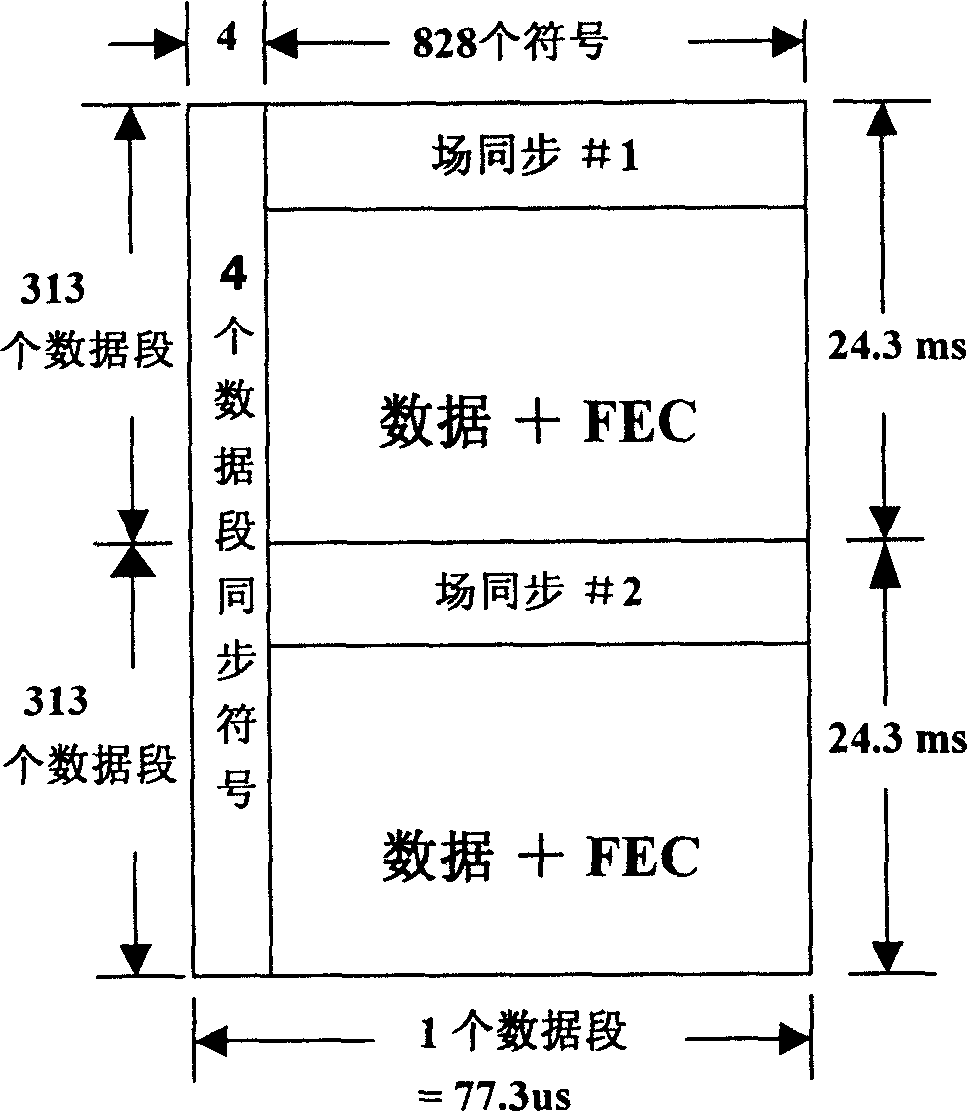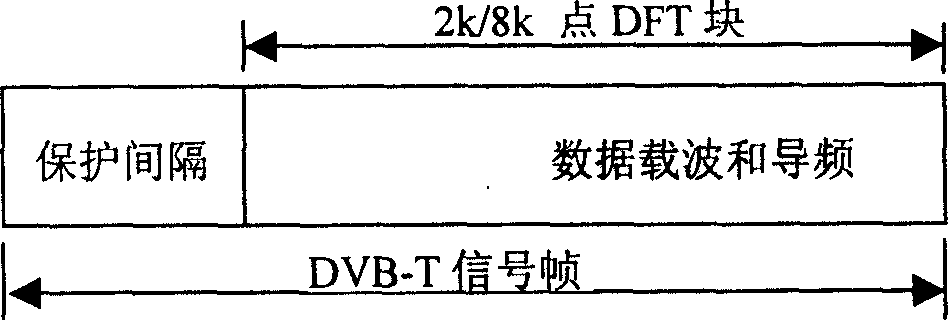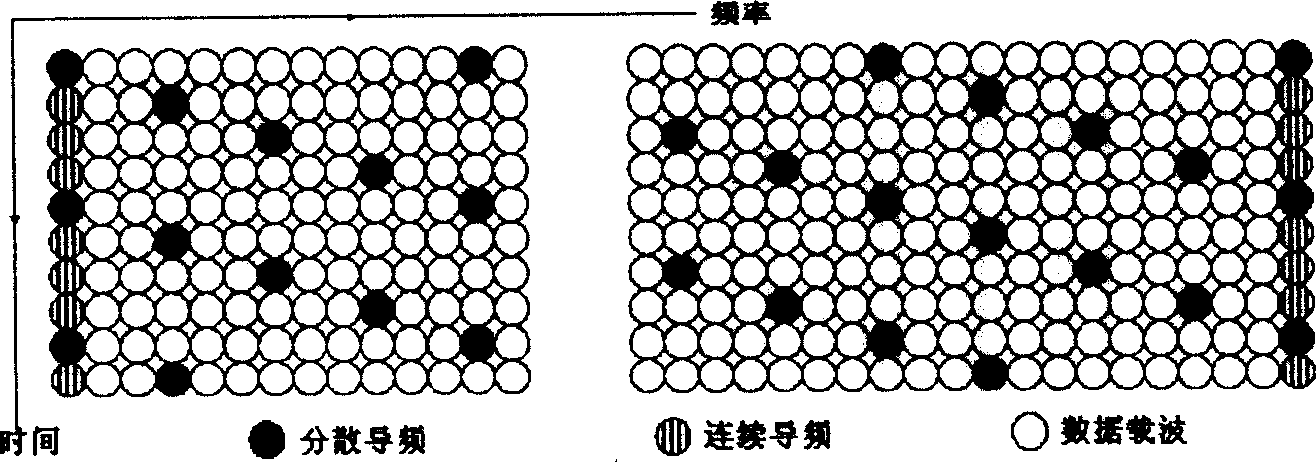Frame synchronizing method for time-domain synchronous orthogonal frequency-division duplex receiver and system
A technology of orthogonal frequency division and time domain synchronization, applied in orthogonal multiplexing systems, multi-carrier systems, multiplexing communication and other directions, it can solve the problem that the performance of the coarse symbol synchronization method cannot be guaranteed, and the correlation characteristics are not as good as PN. It can solve the problems of sequence, destroying the repeating characteristic of cyclic prefix, etc., to achieve the effect of small detection error probability, good autocorrelation performance, and improved detection performance.
- Summary
- Abstract
- Description
- Claims
- Application Information
AI Technical Summary
Problems solved by technology
Method used
Image
Examples
Embodiment Construction
[0070] The theoretical analysis and specific embodiments of the present invention will be described in detail below in conjunction with the accompanying drawings.
[0071] The TDS-OFDM frame synchronization PN signal to be used by the frame synchronization (code acquisition) method proposed by the present invention is composed of a preamble buffer, a PN sequence and a post asynchronous buffer. The PN sequence has 255 symbols, and the pre-sync buffer and post-sync buffer of frame synchronization are defined as the cyclic extension of the PN sequence, and the total length N is 512. The PN sequence is defined as an 8-order m-sequence implemented by a Fibonacci-type linear feedback shift register (LFSR). Its characteristic polynomial is defined as x 8 +x 6 +x 5 +x+1. LFSR block diagram as shown in Figure 6 , the initial value determines the phase of the generated m-sequence. An 8th-order m-sequence is a periodic sequence with a period of K=255. based on Figure 6 The init...
PUM
 Login to View More
Login to View More Abstract
Description
Claims
Application Information
 Login to View More
Login to View More - R&D
- Intellectual Property
- Life Sciences
- Materials
- Tech Scout
- Unparalleled Data Quality
- Higher Quality Content
- 60% Fewer Hallucinations
Browse by: Latest US Patents, China's latest patents, Technical Efficacy Thesaurus, Application Domain, Technology Topic, Popular Technical Reports.
© 2025 PatSnap. All rights reserved.Legal|Privacy policy|Modern Slavery Act Transparency Statement|Sitemap|About US| Contact US: help@patsnap.com



